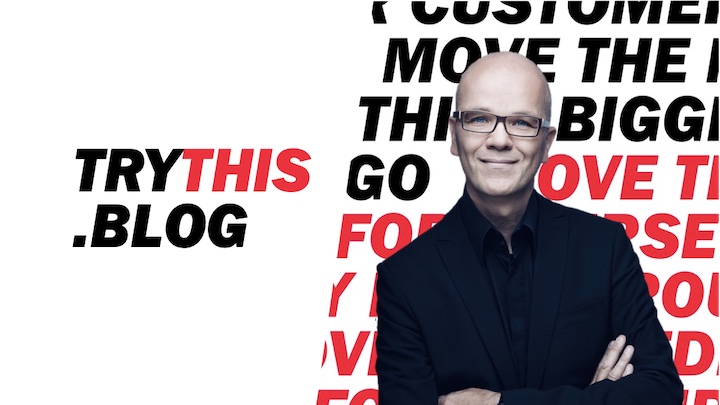Marketers want a positive, do-good brand purpose but if they do harm before doing good, all integrity will be lost and brand purpose will go straight out the window (from my Marketing Week column).
When Ms T entered Auckland’s LynnMall Shopping Centre, beauty products weren’t on her list. At 82, she cared about her looks but she wouldn’t go overboard on creams and gels. A few hours and a few thousand dollars later, all had changed. New Zealand journalists revealed how staff at the Dead Sea Spa shop had bullied her into purchasing bags full of overpriced cosmetics. The mall owner later banned the company from all its centres. But some years on in airports and malls, sales staff of some cosmetic brands continue to coerce people into buying overpriced pots of cream.
By the time you have read this article, thousands of customers will be bullied, misled or badly advised by firms whose marketers talk brand purpose.
Marketers dream of working for brands that do good by serving a higher purpose, which is great, but this ideal isn’t new. Every marketer in the 1980s who read Stephen Covey’s ‘The 7 Habits of Highly Effective People’ asked themselves, “what’s a good purpose for my life?”. In fact, most leaders I know want their work to be meaningful (a privilege some just can’t afford).
But doing good sets a high bar. At the core (level zero), all brands have a simple purpose: to survive. Next, at level one, we expect brands to do no harm. And in a dream scenario, which is level two, brands do even more by doing good and making the world better.
But here’s the issue: many marketers dream of level two, get hired for level zero and forget about level one.
Brand purpose level zero: Survival — a worthwhile cause
A decade ago, ailing Nokia axed tens of thousands of jobs. Luckily, most of their traumatised marketers quickly landed a new job. But it was a different story for the 850 factory workers in Salo, Finland, the 2,200 in Cluj, Romania, and the 2,300 in Bochum, Germany. Their job losses deeply affected their families and in some cases still do.
Blackberry, Bhs, Clinton Cards, House of Fraser, Kodak, Toys ‘R’ Us: when brands fall out of touch with customers, jobs are on the line – jobs that courageous customer experts could have saved by challenging the C-suite to listen to customers.
Are you brave enough to step up internally and prevent your brand from becoming the next Nokia? If you want more brand purpose, that is worth the fight.
Brand purpose level one: Do no harm — the biggest gap
Behavioural science marketing books (in plain English, ‘how to trick customers’) are in huge demand. Around the world, armies of otherwise purpose-talking marketers explore people’s ‘irrationality’ or naivety, to make them buy more, give up rights, or choose the worse deal.
Using the term ‘breakfast cereal’ for high-sugar cookies? It’s what kids want. Hidden charges? Read the small print. Giving travellers the option to pay in their own currency with their credit cards for a hefty fee? People want the familiar. Sneaking newsletter sign-up tick-boxes into order forms? Ahem… Cancelling flights and denying rebooking on other airlines? Eurowings still hasn’t replied to my request. The list is endless.
I sometimes wonder why Google’s famous ‘don’t be evil’ clause in its code of conduct didn’t make it into the corporate guidelines of Alphabet, its parent company since 2015. And why, even within Google’s own code, it fell from the preface to somewhere lower down in April. Doing no harm as a brand, it seems, can be tricky.
Don’t get me wrong, I’m all for clever campaigns and even exaggeration. But great marketing happens inside the value creation zone (the ‘V zone’): the space where customer and company needs overlap. Tricking customers should simply be off limits. Yet, in cut-throat markets, too many leaders have become accustomed to playing tricks on shoppers, not just competitors.<
We need more integrity in marketing. Marketers are craving a positive, do-good brand purpose, which is commendable. But before doing good comes doing no harm. And as long as cheating happens, the do good brand purpose debate is cynical.
Here’s a question: would you be happy to share all of your marketing techniques with customers? If not, you may have crossed the ‘do no harm’ line already.
If you believe in doing good, start by doing no harm. If your brand does harm, step in. That would make for a great purpose.
Brand purpose level two: ‘Do good’ — the ultimate bar
Customers see when purpose is about you and not about them. When Pepsi latched onto the #BlackLivesMatter movement in an ad where Kendall Jenner joined a dancing protest, people were outraged. In reality, most customers would rather watch a 24-hour snooker game than your fabricated corporate purpose ad (nothing wrong with snooker, by the way).
Doing good isn’t a marketing thing. It’s not about your CSR report, or the one-off sponsoring of whatever is hot in the world of purpose. It’s about the entire business model and how your firm serves society.
Paul Polman, Unilever’s CEO, is one of the world’s most purpose-driven global leaders. He reluctantly accepted a marketing prize recently, saying: “We have nothing to celebrate as long as there are people without access to clean water.”
Just imagine: the most powerful person at the head of one of the most powerful companies in the world, committed to issues like sustainable agricultural raw materials or fair pay. And yet, progress is painfully slow and Polman consistently has to defend his purpose agenda.
The brutal truth is that in large publicly listed firms (with short-term profit expectations), doing good can be hard to pull off no matter what the CSR booklet tells you. If you want to change people’s lives from the comfort of your warm corporate cubical, you may need way more courage, tenacity and stubbornness than you think.
The alternative? Leave the comfort and benefits of your Fortune 500 firm and get your hands dirty in a smaller shop. Hugh Pile, a former senior L’Oréal marketer, now leads his family’s smaller fresh fruit business, which leaves much of the value creation inside the producing countries. Would he go back to the big brands? Nope.
If truly serving society, with all its consequences, isn’t for you, ok. Well, helping your brand survive, create jobs, while limiting the harm it may do, is better than nothing.


